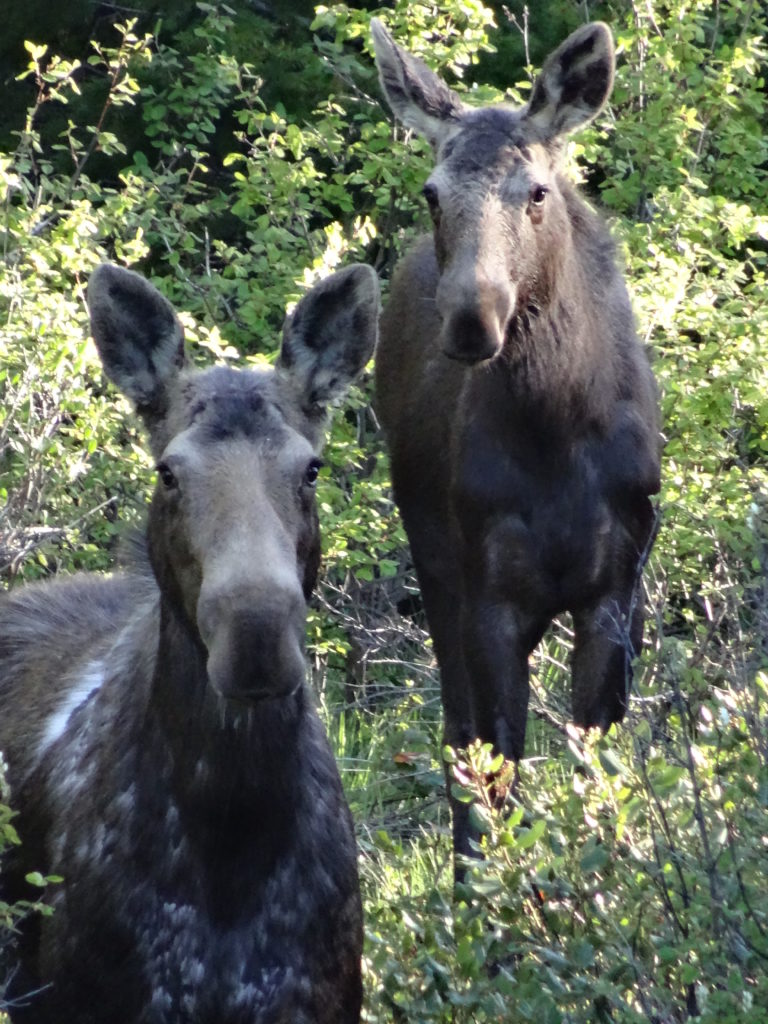
Moose are the largest member of the deer family. They have long, slim legs, cloven hooves, which can be 7” long. Adult bull moose are almost 7′ tall at the shoulder. The Canadian moose is built solidly with heavily muscled shoulders, large forequarters and narrowing to slender hindquarters. Their coat can be a variety of colour from dark brown, almost black, reddish and greyish brown, with grey or white legs. The bulls have heavy main beams that broaden into large palms and are fringed with spikes usually less than a foot long. Each year the antlers start growing in April or May and are light until almost white in colour. While growing, they are covered in velvet, soft, spongy and full of blood vessels. They are fully developed by late August or early September when they become hard and bony and the velvet gets rubbed off on trees. Moose inhabit rocky, wooded hillsides of mountain ranges; on the edges of lakes, wetlands and streams of the great boreal forests, on the northern tundra and in the aspen parkland of the prairies.
Their preferred food source is willow and so they inhabit willow-rich valleys or other areas where good forage exists close to forest cover. They only forage on browse less than 8′ tall like young paper birch, aspen and high-bush cranberry, which makes areas of land several years after a wildfire are perfect food source for Canadian moose.
Canadian moose are generally solitary animals that move between summer and winter ranges. In the Chilcotin Ark they usually migrate between winter ranges in valley bottoms where they feed on willows and higher-elevation summer ranges. Canadian moose will forage on sub-alpine fir in the winter and are particularly well adapted for the cold but not for the heat. During the summer, moose will cool off in water for several hours a day. Moose are highly adept in water eating water plants that grow on a lake or pond bottom like water lilies, pond weed and horsetails and can swim up to 12 miles. Cow moose gives birth in late May and June to one, sometimes two calves. The calves are completely helpless at birth and are kept hidden by their mothers for a couple of days. The calf moose gains weight the fastest of all the North American big game species. Their period of helplessness doesn’t last long, by the time they are a few days old, they can outrun a human and can follow their mothers on a long swim even while very young.